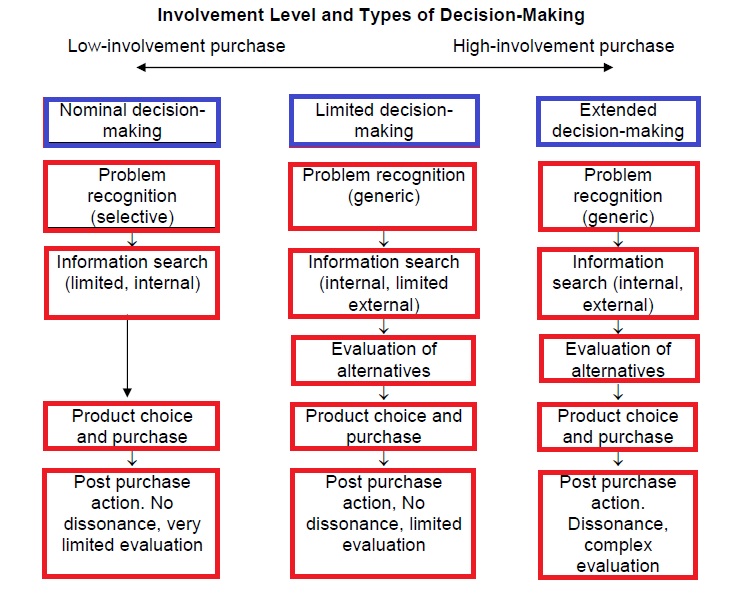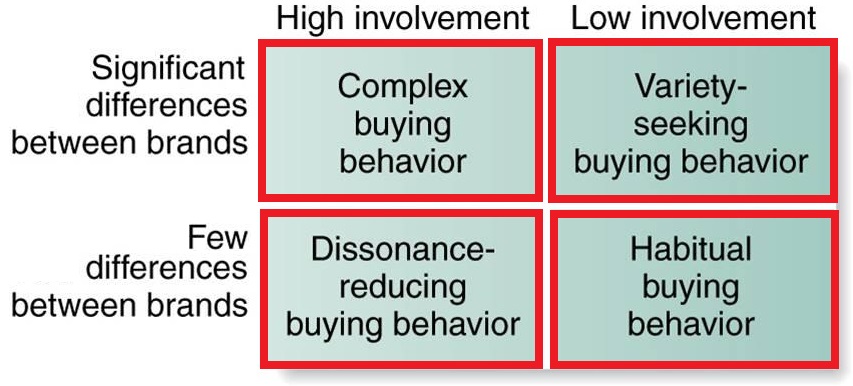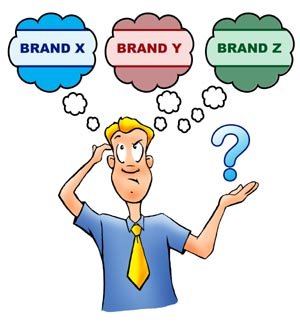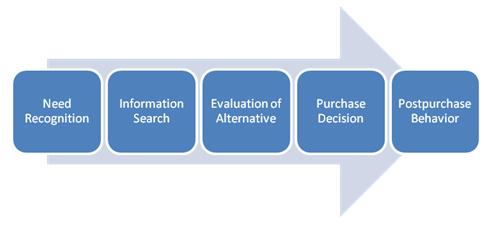Another widely used model in marketing that attempts to explain consumer decision making process is called the Hierarchy of Effects Model. Originally conceived to explain how advertising affects consumer’s purchase decisions, the Hierarchy of Effects Model focuses on consumer learning that takes place as he/she processes information from the external world. Although different researchers developed slightly different models, the basic idea is the same: people experience a sequence of psychological stages before purchasing a product. The origins of the Hierarchy of effects can be traced all the way back to 1898 and the hierarchy’s creator, a salesman named Elias St Elmo Lewis. Lewis believed that rather than simply closing a sale, an effective salesperson actually guided a buyer through a series of stages. He claimed that a proper salesman must ensure Attention, maintain Interest, create Desire and finally spur the customer to Action (purchase). In 1910, the Hierarchy of Effects Continue reading
Consumer Behavior
The Role of Group Influence in Consumer Behavior
So is its true that individualism is dead and that consumer behavior is dominated by the influence of groups? There is no doubt consumer behavior is heavily influenced by groups. Individuals are always striving to conform to group behavior and to please others and this influences the purchase choices that they make. The influence of groups also helps to establish trends in lifestyle, fashion, and the assimilation of new products, into the lives of consumers. The notion of ‘virtual communities’ has been around ever since the inception of the internet. Whereas people used to meet and form communities geographically, the internet allows groups of like-minded people to meet virtually through communities based on, for example, online chat rooms and forums. Here individuals, who share common interests, can make contact with each other without any geographic restrictions. The interaction between members of such groups tends to be more uninhibited that it Continue reading
Level of Involvement in Consumer Behavior
Consumer involvement is considered as an important variable that can help explain how consumers process the information and how this information might influence their purchase or consumption related behavior. However, there is wide agreement that the degree of involvement has a very significant effect on consumer behavior. Herbert Krugman, a researcher is credited with his contribution to the concept of consumer involvement. According to him, consumers approach the marketplace and the corresponding product/service offerings with varying levels and intensity of interest and personal importance. This is referred to as consumer involvement. Involvement variables are believed to precede involvement and influence its nature and extent. These variables are believed to be the sources that interact with each other to precipitate the level of consumers involvement at any particular time and situation. The extent of risk perception the consumer has with purchase decision can also influence the level of involvement. The perceived Continue reading
Types of Consumer Buying Behavior
Consumers are becoming smarter day by day; it is not to fool them with any gimmick. Nowadays, consumer does his/her homework very well before making any purchase in the market. Even before buying a face wash a consumer go through a rigorous process of choosing the best among the many present in the market. Buying a face wash and buying a luxurious car is very different, therefore the perception involved and the information gathered by the consumer in purchasing a car is much more than buying a face wash. Henry Assael distinguished four types of consumer buying behavior based on the degree of buyer involvement and the degree of differences among brands. Routinized Response Behavior (RRB)/ Habitual Buying Behavior: This is the simplest type of consumer behavior. This occurs when the consumer already has some experience of buying and using the product. Usually, this kind of behavior is adopted for Continue reading
Factors Influencing the Consumer Decision Making Process
Each buying decision you make involves an elaborate mental thought process, a degree of active reasoning, though on the surface it may not always seem to be so. This may be because over a period of time you have taken certain buying decisions so many times that they now seem to be made almost automatically but that is not true at all. Even your daily decision of buying a loaf of bread involves the element of active reasoning as buying a new sofa set for your drawing room. However, in the former case, the extent and intensity of active reasoning may be much less as compared to the latter case. In the case of bread, the only decision variables may be which brand, quantity and retail outlet. But in the case of buying a sofa set the decision variables are far more in number. These may be: Ready-made or made Continue reading
Consumer Decision Making Process
The five stages of the consumer decision making process include; Problem recognition, information search, information evaluation, purchase decision, and evaluation after purchase. This is just a general model of the consumer decision making process and it emphasizes that the buying decision making process starts before the actual purchase and continues even after the purchase. It also encourages the marketer to focus on the complete buying process and not just on the purchase decision. 1. Problem Recognition Consumers recognize a problem as a need or want. Of course, the most frequent problem occurs when consumers realize they are out of the product. For example, when the gas tank gets near empty, or you run out of lunch meat for your sandwiches, or when your car is due for maintenance. Problem recognition also occurs when a consumer receives new information about a good, service, or business. New fashions, for example, can make Continue reading




